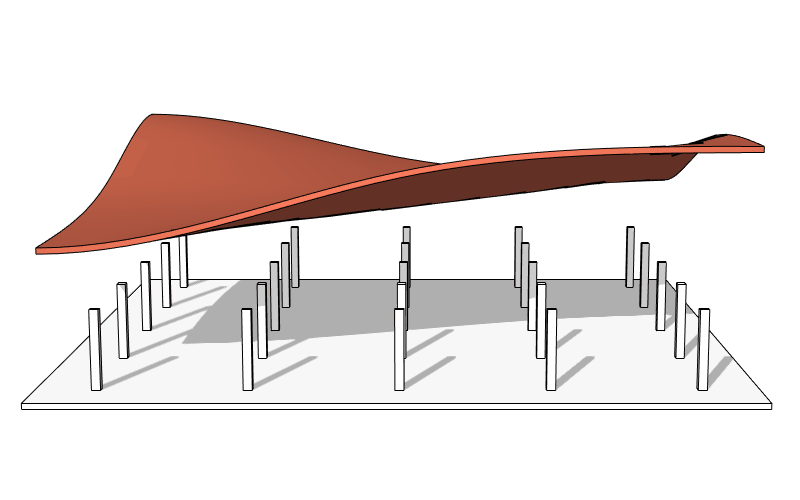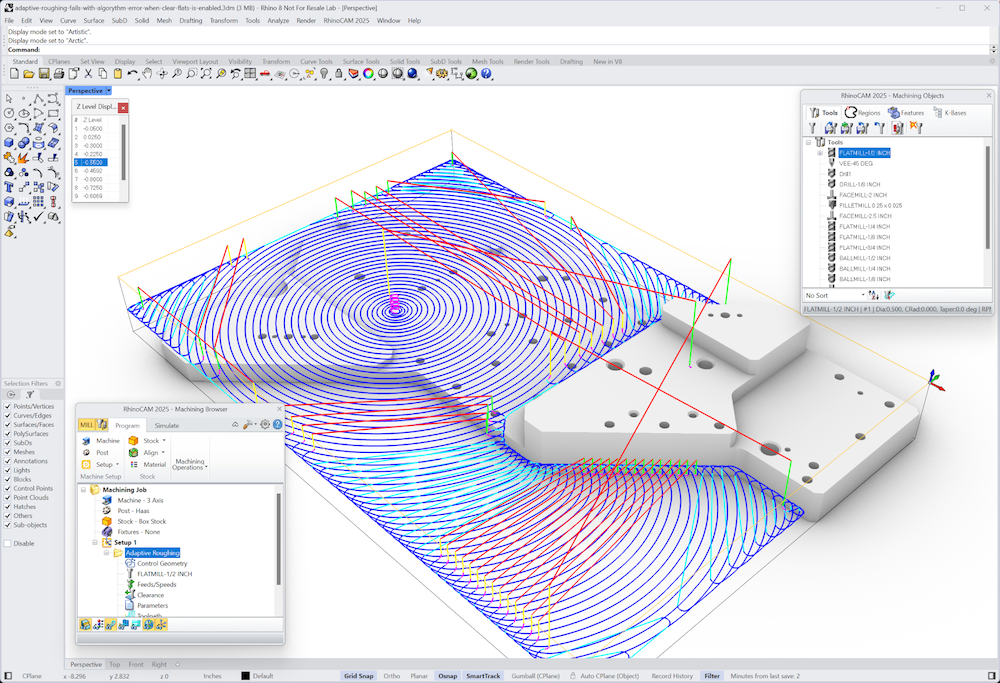Your Cart is Empty
Customer Testimonials
-
"Great customer service. The folks at Novedge were super helpful in navigating a somewhat complicated order including software upgrades and serial numbers in various stages of inactivity. They were friendly and helpful throughout the process.."
Ruben Ruckmark
"Quick & very helpful. We have been using Novedge for years and are very happy with their quick service when we need to make a purchase and excellent support resolving any issues."
Will Woodson
"Scott is the best. He reminds me about subscriptions dates, guides me in the correct direction for updates. He always responds promptly to me. He is literally the reason I continue to work with Novedge and will do so in the future."
Edward Mchugh
"Calvin Lok is “the man”. After my purchase of Sketchup 2021, he called me and provided step-by-step instructions to ease me through difficulties I was having with the setup of my new software."
Mike Borzage
An Interview with Paul Babb, CEO of Maxon (Cinema 4D)
May 07, 2007 5 min read

Paul Babb is the CEO of MAXON US, the company that makes the famous Cinema 4D modeling, rendering, and animation products. Based on my experience I can say that every company and product has its own personality. Whenever I have the opportunity to talk with a Cinema 4D user about their experience with the product, I can "feel" the personality of Maxon software: powerful and easy to use. This is not the side effect of a lucky sequence of events, but the result of the vision and strategy of the person leading the company. This person is Paul Babb. This interview is a great opportunity to know more about Paul and the company he heads.
Paul, can you tell us a bit about yourself and your company?
my first introduction to 3D was as the Product Marketing Manager for ElectricImage
Myself: California born and bred (except for a short stint in New York). I earned a Bachelor of Arts degree from the University of California at Santa Barbara and my Master's Degree from the University of California at Los Angeles. After school, I worked in marketing and advertising. My first introduction to 3D was as the Product Marketing Manager for ElectricImage. In 1997, working with MAXON in Germany, I introduced CINEMA 4D to the North American market. In October 1998, with the parent company I founded MAXON USA to better serve the North and South American markets.
Company: MAXON was started in Germany in 1985. The company originally developed instructional computer books and magazines. Soon, this translated into publishing software packages. In 1991, two programming brothers brought a raytracing product for the Amiga to MAXON. This was the first incarnation of CINEMA 4D and was originally released as "Fast Ray". Everyone saw great potential for the product and so it was decided to invest more energy into its further development. After two years of R&D, the first version of CINEMA 4D, now a full featured 3D application, was released. In 1998, CINEMA 4D was released, completely re-architectured to be platform independent, modular, and designed for fast, efficient development.
The latest film projects to feature CINEMA 4D include Spider-Man 3, Surf's Up, Ghost Rider, Open Season, Pirates of the Caribbean: Dead Man's Chest, Monster House, Eragon, Superman Returns, The Chronicles of Narnia: The Lion, the Witch, and the Wardrobe. In broadcast: Wheel of Fortune, Jeopardy, and the On-Air Packages for Comedy Central, Monday Night Football, ESPN, NFL Network, TiVO, NBC, DirecTV, CBS NFL, Fox and many more.
Maxon is a very well-known name in the movie industry. How did a young and relatively small company like Maxon manage to became so popular?
it's our pro-customer service philosophy that makes us a standout in this industry
First credit has to go to our programming team for developing a product that is powerful, comparatively easy to use, is fast in workflow and rendering, and integrates well into any production pipeline. Secondly, I'd say it's our pro-customer service philosophy that makes us a standout in this industry.
So our product is developed in a way that makes it easy for the artist to succeed, and on the service side we focus on providing the support and resources artists need to succeed.
Cinema 4D is recognized as one of the most easy 3D systems to use. Can you tell us in which ways you worked to achieve simplicity while supporting complex features?
Again, the credit here goes to the developers. While building CINEMA 4D in a modular fashion makes the development process easier and more efficient for the programmers, it also provides lines of delineation for the user. On the interface side, the bread and butter of 3D is right at your fingertips – the more complex features are there if you want to dig deeper. Many features are accessed via user defined "levels of detail". For instance, when using Sketch and Toon (our non-photorealistic rendering engine), users are offered dozens of presets to choose from. If a user wants more control, a simple pull down menu provides access to additional controls over the style and type of rendering that can be done. Choosing "Simple" offers only basic manipulation, "Intermediate" a bit more control and "Advanced" reveals control over every aspect of the renderer and results.
Movie productions usually work with several, apparently competing, software packages. In which stage of their process do they use Cinema 4D and why?
no 3D package can be everything to every artist
"Apparently competing" is a great way of putting it. As far as I am concerned, CINEMA 4D is just another tool in the production pipeline. I don't think of MAXON as competing – I believe it is our job to make sure our tool plugs into any pipeline regardless of what other software packages they are using. It is our job to make it easy for the artist to succeed. That means recognizing that artists use many tools to complete their task, and not only accepting your role in that pipeline, but excelling at it.
For years, I've been baffled by the competitive nature of other 3D developers. Every 3D package has its strengths and weaknesses. No 3D package can be everything to every artist. I believe that way of thinking only creates problems for the artists. It's our job to make their job easier.
That being said, in the film industry, the main areas where our products offer an advantage for artists is, CINEMA 4D for creating 3D digital environments and BodyPaint 3D for 3D texturing. Our products are also used for special effects, character animation, etc., etc. but these are two areas in motion pictures where we excel.
In the broadcast or motion graphics market, CINEMA 4D stands alone. Our speedy workflow and ease of use makes it the only choice for motion graphics. In this case an artist may be bringing in an Illustrator file to create a 3D version of their client's logo. The artist would then create the structure of the scene in 3D and render out layers and 3D elements to their 3D compositing package (After Effects, Motion, Shake, Final Cut Pro, etc.). Again, it's the ease, fast workflow and integration where we excel.
What is your current strategy for design and manufacturing?
You're going to get tired of hearing it but, "integration". Make it as easy as possible for artists to bring assets in and out of CINEMA 4D to accomplish the work they want to achieve. Use CINEMA 4D where it provides them an advantage and integrate with other tools that help them succeed.
Several online communities orbit around Maxon and Maxon products. What is your company’s relationship with these communities and what is their influence on your products?
we are constantly monitoring forums and keeping track of the support calls
Community support is what helps animators succeed, so we try to support them as much as we can. The professionals that contribute to those forums are an invaluable resource for both MAXON and other users.
Community is one of the reasons we started Cineversity here in the states – to provide more resources for users to succeed.
As far as influence on the development of our products – we are constantly monitoring forums and keeping track of the support calls that come into our offices. This is invaluable information when it comes to knowing what we can do to improve our products.
In the future, do you plan to expand Maxon to a wider market, or to increase your presence in your current market?
Both. ;-)
Again, we are just another "paint brush" in the artist's toolset. I want CINEMA 4D to provide value they can't get anywhere else and for it to be as easy as possible for an artist to plug us into their pipeline.
I would like to thank Paul Babb for taking the time to speak with me today. If you have any questions for Paul or for Novedge, please leave a comment below and we will be glad to answer.
Franco Folini
Also in NOVEDGE Blog

Enhance Your Designs with VisualARQ 3: Effortless Geometry Extensions for Walls and Columns
April 30, 2025 8 min read
Read More
MecSoft Unveils RhinoCAM 2025 and VisualCAD/CAM 2025 with Enhanced Features
March 08, 2025 5 min read
Read MoreSubscribe
Sign up to get the latest on sales, new releases and more …



